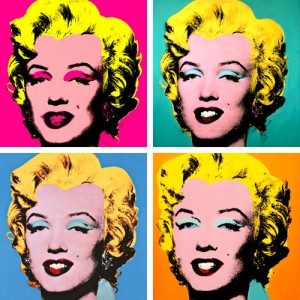“Even the most perfect reproduction of a work of art is lacking in one element: its presence in time and space, its unique existence at the place where it happens to be.”
Our current practice (2013) regarding sound recordings, movies, novels, poems, or images is rooted in old norms of analog reproduction. New art technologies will allow varying surface iteration of an underlying art product.
 For example, the new process of making a “recording” of music will involve capturing or conceiving several plausible performance alternatives and allowing algorithms to be made that can render a new “performance” each time the listener chooses to listen. All this art will include VSI (variable surface iteration).
For example, the new process of making a “recording” of music will involve capturing or conceiving several plausible performance alternatives and allowing algorithms to be made that can render a new “performance” each time the listener chooses to listen. All this art will include VSI (variable surface iteration).
Eve Sussman has already made a “film” with multiple pathways through it (though all the visual and sound material has been produced in advance). Rupert Nesbitt makes digital animations which actually do render differently each time they are viewed.
Even the HDR setting on your phone is allowing multiple images to be captured and purposed to more layered, nuanced experience in reception. (Images of differing focus are overlaid.)
The great possibilities of realizing multiple varying surfaces in image, text, or music (sound) remain for us to develop.
The changing surface of a text doesn’t have to be randomized. Imagine the poet allowing for a varying subject in his phrase: in 93% of versions the word will be “creature,” in 7% of reads, the word that appears will be “rabbit.”
This art is no longer a fixity, but a range. And the details can be generated through ongoing interaction with other (new) data streams — the news, or the reader’s pulse or neural firings. Today’s “phone” becomes “ceiver” in the future. No more dated brand names in short stories — or brand names dated by a considered degree. The restive reader may get a shorter or punchier book.
For those who never find recordings quite to be music, the application of VSI will mark a real change. Perhaps music avoids disappearing into the “perfection of its materiality” — Baudrillard’s concern. This will be a new music not a recording of sound.
In the new studio, I might evaluate a number of alternative performance possibilities, putting my opinions into a software program. Or the program, adopting one of many, tweakable “producer” personas can take the information contained in my playing and synthesize a functioning VSI music product. (My involvement with or control of specific nuances can vary as I choose.)
Our ongoing conversation about live performances versus recording changes considerably if “recordings” are no longer fixities. This new art will not require live artists to carry it out in the moment, but it will not be recording, or it will be recording that is performative. No longer copying — this art will give new meaning to “reproduction.”

Is this really happening?
Hi Bruce, Great post. We used it as the basis for a post on the Copyright Alliance’s CreativityTech blog. http://creativitytech.com. I right a bit about how copyright could be applied (or not) to improvisation. Thanks for the thoughts!
Wow. I’ve never imagined art would go so far, but art is art, and I think this opens up millions of possibilities. We’re lucky to live in these exciting times.
Technology has taken art and education to brand new levels that I never would have dreamed 20 years ago. As an Art History teacher I have seen how technology has changed both industries. Thanks for the post Bruce.